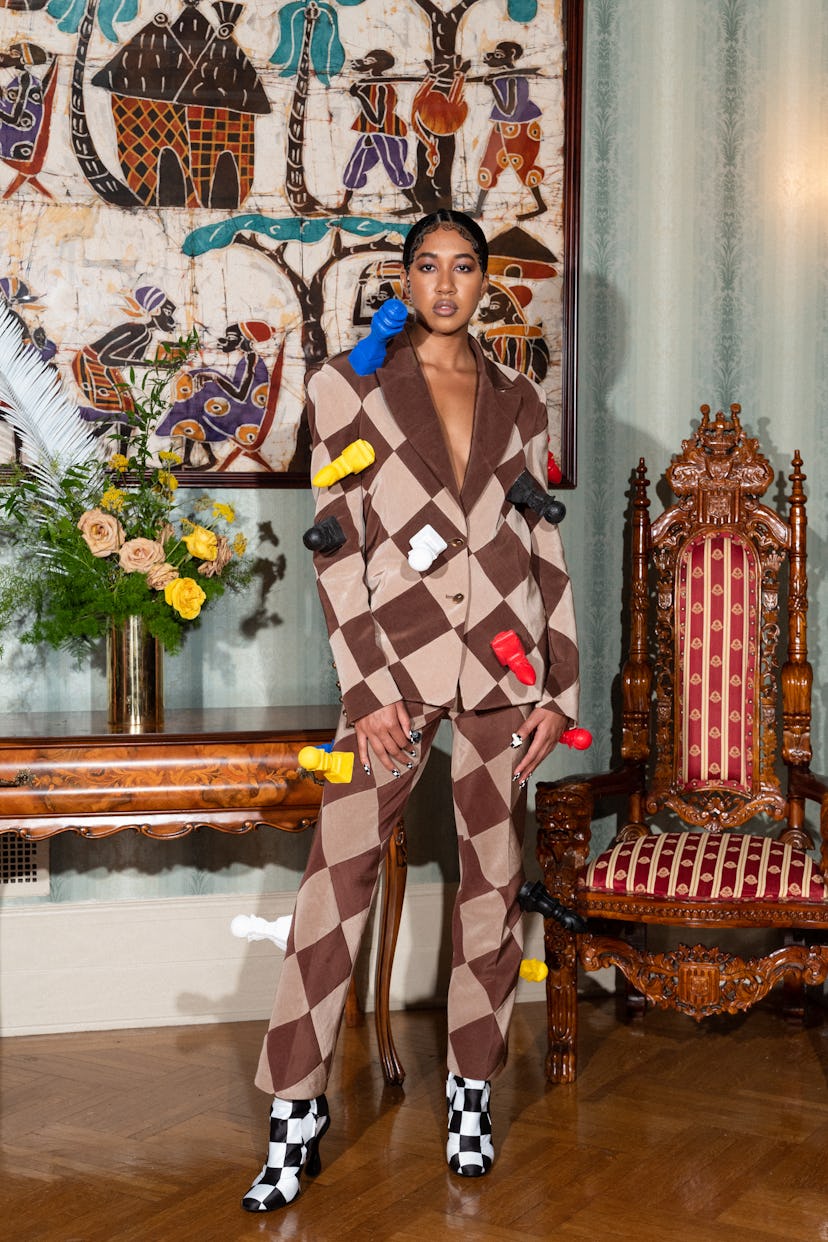Inside Pyer Moss’s Historic Couture Show, a Tribute to Black Excellence

“We came up with this idea for couture while doing ayahuasca,” Pyer Moss designer Kerby Jean-Raymond told the crowd assembled for his first haute couture show on Thursday, July 8. “I don’t know if anybody’s ever tried it. You should.”
The looks from Jean-Raymond’s Pyer Moss collection—which was postponed Thursday afternoon due to a tropical storm that thwarted the designer’s show until it was re-staged on Saturday—titled Wat U Iz certainly mirrored the psychoactive drugs that contributed to their origin. But more importantly, the show marked a number of historic milestones: not only was it Pyer Moss’s first turn at couture, but Jean-Raymond was the first Black designer to ever show at Haute Couture Week. And in response, the designer who’s known to put on a spectacular show filled his presentation with both symbolic and overt references to Black innovators. The blue and white runway was erected on the lawn of Villa Lewaro, an estate that once belonged to Madame C.J. Walker. The activist, writer, singer, and former leader of the Black Panther Party Elaine Brown opened the show with a speech that urged Black people and other marginalized groups to unify. And each fanciful piece of clothing that comprised the collection was a nod to the Black creators who’d invented them.
Pyer Moss’s homage to the hot comb, created by Madam C.J. Walker.
The electric lightbulb, created by Lewis Howard Latimer, took form at Pyer Moss as a pale pink lampshade with beaded tassels. Soloman Harper’s hair rollers cascaded from the top of a model’s head to their feet—a capelike cloak worn over a bathrobe. The mop, invented by Thomas W. Stewart; the single-use bottle cap, an innovation by Amos E. Long and Albert A. Jones; Oscar E. Brown’s horseshoe; even ice cream, which was brought to the United States by Augustus Jackson, were reimagined by Jean-Raymond and his design team.
The folding chair, created by Nathaniel Alexander.
And then there were the pieces interpreted quite literally: a jar of peanut butter (a nod to the life’s work of scientist George Washington Carver); a huge cell phone (invented by Henry T. Sampson) slung across the front of a model in a black gown, and a white refrigerator. The latter bore the words “But who invented Black trauma?” in colorful, plastic fridge magnets.
A nod to Frederick Jones’s invention, the air conditioning unit.